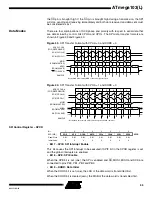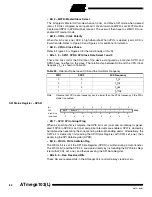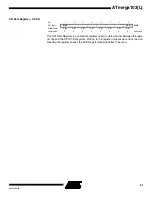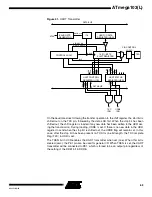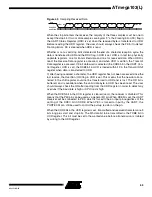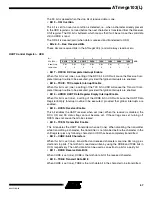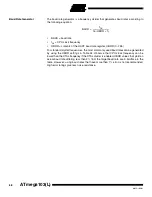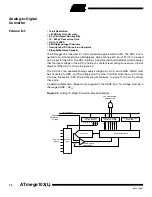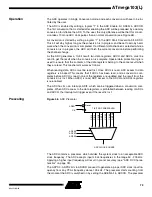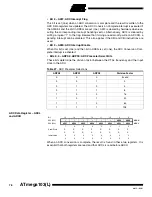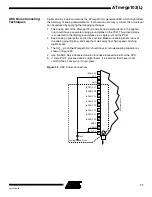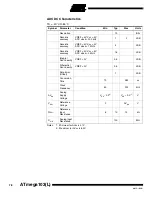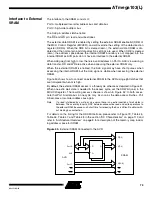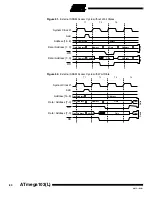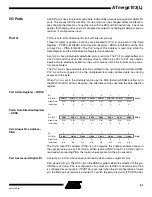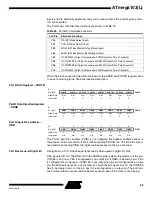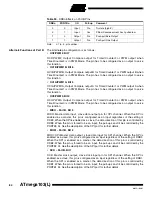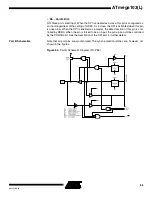
72
ATmega103(L)
0945G–09/01
Analog-to-Digital
Converter
Feature list:
•
10-bit Resolution
•
±2 LSB Absolute Accuracy
•
0.5 LSB Integral Non-linearity
•
70 - 280 µs Conversion Time
•
Up to 14 kSPS
•
8 Multiplexed Input Channels
•
Interrupt on ADC Conversion Complete
•
Sleep Mode Noise Canceler
The ATmega103(L) features a 10-bit successive approximation ADC. The ADC is con-
nected to an 8-channel Analog Multiplexer, which allows each pin of Port F to be used
as an input for the ADC. The ADC contains a Sample and Hold Amplifier, which ensures
that the input voltage to the ADC is held at a constant level during conversion. A block
diagram of the ADC is shown in Figure 45.
The ADC has two separate analog supply voltage pins, AV
CC
and AGND. AGND must
be connected to GND, and the voltage on AV
CC
must not differ more than
±
0.3V from
V
CC
. See the section “ADC Noise Canceling Techniques” on page 77 on how to connect
these pins.
An external reference voltage must be applied to the AREF pin. This voltage must be in
the range AGND - AV
CC
.
Figure 45.
Analog-to-Digital Converter Block Schematic
ADC CONVERSION
COMPLETE IRQ
8-BIT DATA BUS
9
0
ADC MULTIPLEXER
SELECT (ADMUX)
ADC CTRL & STATUS
REGISTER (ADCSR)
ADC DATA REGISTER
(ADCH/ADCL)
MUX2
ADIE
ADIE
ADSC
ADEN
ADIF
ADIF
MUX1
MUX0
ADPS0
ADPS1
ADPS2
8-
CHANNEL
MUX
CONVERSION LOGIC
10-BIT DAC
+
-
SAMPLE & HOLD
COMPARATOR
Analog
Inputs
External
Reference
Voltage


